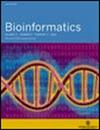重新审视药物-蛋白质相互作用预测:全新的全局-局部视角
IF 4.4
3区 生物学
Q1 BIOCHEMICAL RESEARCH METHODS
引用次数: 0
摘要
动机准确推断潜在的药物蛋白相互作用(DPI)有助于了解药物机制和开发新型疗法。我们提出了一种新的计算框架,该框架整合了药物-蛋白质双向图中节点的全局和局部特征,以实现高效的 DPI 推断。首先,我们使用预先训练好的模型来获取药物和蛋白质的基本知识,并确定它们的初始特征。随后,我们利用 MinHash 和 HyperLogLog 算法来估计药物和蛋白质子图之间的相似性和集合万有引力,作为它们的局部特征。然后,将能量受限扩散机制集成到转换器架构中,捕捉药物-蛋白质双元图中节点之间的相互依赖关系,并提取其全局特征。最后,我们融合节点的局部和全局特征,采用多层感知器(MLP)来预测潜在 DPI 的可能性。全面而精确的节点表示保证了模型对未知 DPI 的高效预测。各种实验验证了我们模型的准确性和可靠性,分子对接结果表明该模型有能力识别现有数据库中不存在的潜在 DPI。这种方法有望为促进药物再利用和个性化医学研究提供有价值的见解。可用性和实施我们的代码和数据可在以下网址访问: https://github.com/ZZCrazy00/DPI.SUPPLEMENTARY 信息补充数据可在 Bioinformatics online 上获取。本文章由计算机程序翻译,如有差异,请以英文原文为准。
Revisiting Drug-Protein Interaction Prediction: A Novel Global-Local Perspective.
MOTIVATION
Accurate inference of potential Drug-protein interactions (DPIs) aids in understanding drug mechanisms and developing novel treatments. Existing deep learning models, however, struggle with accurate node representation in DPI prediction, limiting their performance.
RESULTS
We propose a new computational framework that integrates global and local features of nodes in the drug-protein bipartite graph for efficient DPI inference. Initially, we employ pre-trained models to acquire fundamental knowledge of drugs and proteins and to determine their initial features. Subsequently, the MinHash and HyperLogLog algorithms are utilized to estimate the similarity and set cardinality between drug and protein subgraphs, serving as their local features. Then, an energy-constrained diffusion mechanism is integrated into the transformer architecture, capturing interdependencies between nodes in the drug-protein bipartite graph and extracting their global features. Finally, we fuse the local and global features of nodes and employ multi-layer perceptrons (MLPs) to predict the likelihood of potential DPIs. A comprehensive and precise node representation guarantees efficient prediction of unknown DPIs by the model. Various experiments validate the accuracy and reliability of our model, with molecular docking results revealing its capability to identify potential DPIs not present in existing databases. This approach are expected to offer valuable insights for furthering drug repurposing and personalized medicine research.
AVAILABILITY AND IMPLEMENTATION
Our code and data are accessible at: https://github.com/ZZCrazy00/DPI.
SUPPLEMENTARY INFORMATION
Supplementary data are available at Bioinformatics online.
求助全文
通过发布文献求助,成功后即可免费获取论文全文。
去求助
来源期刊

Bioinformatics
生物-生化研究方法
CiteScore
11.20
自引率
5.20%
发文量
753
审稿时长
2.1 months
期刊介绍:
The leading journal in its field, Bioinformatics publishes the highest quality scientific papers and review articles of interest to academic and industrial researchers. Its main focus is on new developments in genome bioinformatics and computational biology. Two distinct sections within the journal - Discovery Notes and Application Notes- focus on shorter papers; the former reporting biologically interesting discoveries using computational methods, the latter exploring the applications used for experiments.
 求助内容:
求助内容: 应助结果提醒方式:
应助结果提醒方式:


